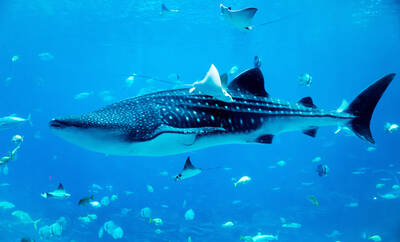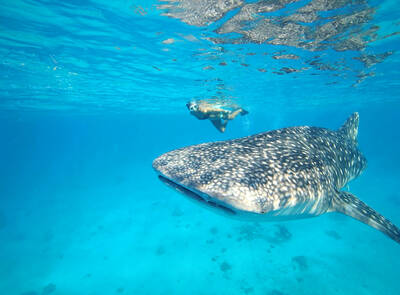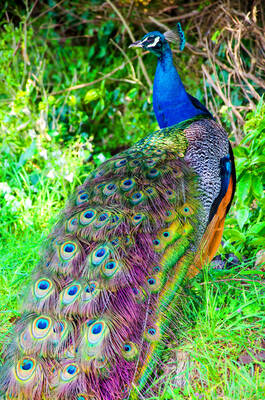From Feb. 24 to March 1, Russians celebrated Maslenitsa, possibly the oldest Slavic religious and folk holiday.
Also known as “butter week” or “pancake week,” Maslenitsa is a way to welcome spring by eating pancakes, which represent the sun.
The name Maslenitsa dates to the 17th century, when the festival was officially recognized by the Russian Orthodox church. Before that, it was a pagan festival. It used to have a pagan name, “Komoyeditsa,” which means “feeding bears.” “Kom” is an old Russian word for “bear,” the sacred animal of Slavs, and according to one theory people would offer them pancakes when they woke from their winter hibernation.

Photo: Reuters
照片:路透
At the beginning of the week the community builds a female effigy of Lady Maslenitsa out of straw. This is paraded around the area. The final day is a day of forgiveness, in which people ask relatives and friends to forgive them. The celebration ends with the burning of the Maslenitsa effigy to symbolize the imminent end of winter.
(Paul Cooper, Taipei Times)
俄羅斯人在二月二十四日至三月一日過「謝肉節」,這或許是斯拉夫民族最古老的宗教與民間節慶。

Photo: Reuters
照片:路透
謝肉節亦稱為「奶油週」或「烤薄餅週」,人們吃代表太陽的薄餅,以迎接春天的到來。
謝肉節名稱「Maslenitsa」之由來,始於十七世紀俄羅斯東正教教會對該節慶的正式承認。它原為異教節慶,名為「Komoyeditsa」,意思是「餵熊」。「Kom」是古俄文,意為「熊」。熊是斯拉夫民族的神獸,其由來有一說是認為,熊自冬眠甦醒後,人們會拿薄餅餵熊吃。
在這為期一週的節慶之始,居民用麥桿紮成草人「馬斯列尼察女神」,在附近遊街。節慶最後一天是寬恕之日,人們請求親戚朋友的原諒。謝肉節的慶祝活動以焚燒女神草人畫上句點,象徵冬天即將結束。

Photo: Reuters
照片:路透
(台北時報林俐凱譯)

Photo: Reuters
照片:路透

The third-hottest July worldwide ended a string of record-breaking temperatures last month, but many regions were still devastated by extreme weather amplified by global warming, the European climate monitoring service said Thursday last week. Heavy rains flooded Pakistan and northern China; Canada, Scotland and Greece struggled to tame wildfires intensified by persistent drought; and many nations in Asia and Scandinavia recorded new average highs for the month. “Two years after the hottest July on record, the recent streak of global temperature records is over,” Carlo Buontempo, director of the EU’s Copernicus Climate Change Service, said in a statement. “But that

Whale sharks are the largest species of fish in the world. They aren’t related to whales, but take their name due to their enormous size. At full maturity, whale sharks measure around nine or 10 meters long and can weigh from 15,000 to 40,000 kilograms. Whale sharks live in warm waters, with about 75% of them found in the Indo-Pacific region. They can migrate thousands of kilometers to different feeding grounds, but at a slow speed of 5 km/h on average. Whale sharks have a broad, flat head and are typically brown or gray in color. Their distinguishing characteristic

Continued from yesterday(延續自昨日) https://www.taipeitimes.com/News/lang Whale shark reproduction has long been a mystery for scientists. However, a significant discovery in 1995 off the eastern coast of Taiwan provided valuable insights. Researchers examined a pregnant female of the species and found over 300 embryos inside her body, ranging from about 40 to 60 cm in length. This discovery revealed that whale sharks are ovoviviparous. Instead of laying eggs in the ocean, the mother carries them internally until they hatch, giving birth to fully developed live young. Since the eggs don’t hatch all at once, embryos at different stages of development can all exist within

Peacocks are among the most beautiful birds in the world. Their bright feathers and graceful movements have fascinated humans for centuries. These magnificent creatures belong to the pheasant family and are found in regions across Asia and Africa. Let’s explore peacocks’ unique characteristics and cultural significance. There are three main species of peacock: the well-known Indian peafowl, native to South Asia; the endangered green peafowl from Southeast Asia; and the rare Congo peafowl, found in African rainforests. Although the term “peacock” technically refers only to males, many people use it for both sexes. Male peacocks display their colorful tail feathers, which